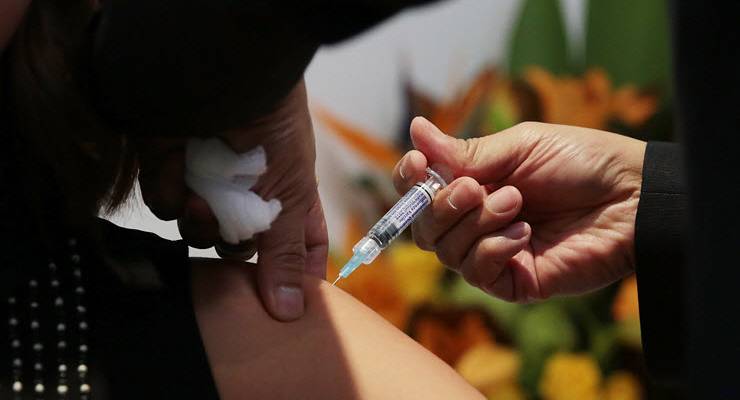
Australia has done well to flatten the coronavirus curve. Even taking into account Victoria’s clusters, numbers are low by global standards: 104 people have died from COVID-19 compared with more than 500,000 worldwide.
Meanwhile, between 290,000 and 650,000 die around the world every year from the flu.
The mass change in behaviour that helped keep our COVID-19 numbers down has had the side effect of limiting the spread of influenza. From the start of 2020 to May 31 (the latest data available) there have been just 36 laboratory-confirmed influenza-associated deaths. There were 147 at the same time last year.
Experts say this trend may continue for years.
Behaviour makes a big difference
University of Sydney infectious diseases expert Professor Robert Booy told Crikey social distancing had had a “massive effect” on flu rates.
“People are just more aware now of the dangers of respiratory viruses, whether it’s the flu or COVID-19,” he said.
A combination of social distancing, increased handwashing and getting the flu shot had limited spread of any virus and research showed 90% of Australians had changed their behaviour.
University of Queensland infectious diseases expert Associate Professor Paul Griffin said fewer people coming from overseas had also helped.
“We see a lot of flu brought from other parts of the world,” he said. “And we’re seeing less air, road and rail travel domestically.”
Griffin said increasing numbers of people working from home was another factor — in a normal year people with mild flu symptoms would go into work.
A vaccination surge
Nearly double the number of Australians had the flu vaccination this year compared with 2018, the Health Department said.
Between March 1 and June 27, 8,584,397 got jabbed. In 2019 that number was 6,485,663, and in 2018 it was 4,586,37 (2019 had an early start to the flu season).
And there’s little chance of running out of doses — more than 18 million were available compared with 13.2 million in 2019 and 11 million in 2018.
The Health Department secured its largest supply of seasonal influenza vaccines, and expanded eligibility criteria for free shots.
“This is certainly the most vaccination we’ve ever had, and it may well be a big part of the reason we’re having such low flu numbers,” Immunisation Australia chief executive Kim Sampson said.
But Sampson also suggested the almost-instant drop in flu numbers when social distancing kicked in indicated that behavioural change might have had a bigger impact than vaccine uptake.
A less severe season
Not only have behavioural changes limited flu deaths this year, they could have a flow-on effect next year, Booy said.
“The level of influenza activity is so low the virus doesn’t have as big of a chance as usual to mutate and change and cause more trouble,” he said. “There’s no evidence this influenza strain is any more severe than previous years.”
For infectious diseases doctors, the question is how long Australians’ awareness of hand hygiene will last.
Flu season peaks on average in August and although people may start to relax their behaviours, Booy believed the impact would stay.
“It could lead to a further tertiary impact on next year and less flu next year because we’ve learnt how to do social distancing and handwashing and all that,” he says.
If Australians internalised the lessons from COVID-19, future flu seasons could be easier to manage. But that was a big “if”, Griffin said. Public health authorities would need to keep reminding people of this stuff every year.
“I’d like to think that what we see people doing for prevention of COVID-19 will translate into sustained behaviour, but unfortunately people have short memories,” he said.









And with so many jobs, thanks to our neoliberal governments, now so casualised, so insecure, so low paid, nobody can afford to stay home just because they have a sniffle. And their hard nosed bosses are just as likely to sack them if they do, all with the approval of government workplace policy.
Thanks for that reasonable exposition – epidemiology is a many & varied thing.
I have the sinking feeling that virii are only just starting to play with us.